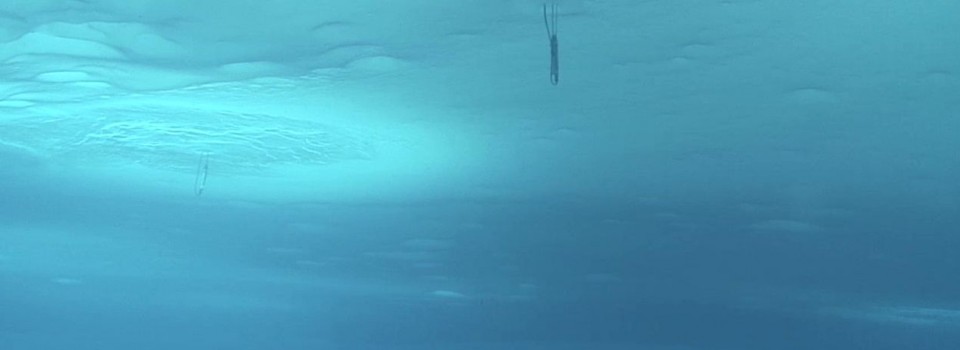
The main objective of this work package (WP) is to provide comprehensive, year-round observations (ocean, ice, and atmosphere) of the Arctic marine environment, as well as extend the existing datasets in key areas of the East Siberian Arctic Shelf, that together become an observational benchmark dataset to help reduce observational and modelling uncertainties in this region.
This observational programme has been developed through consultation between the observational and modelling communities. From these discussions a key set of observational measurements in the ocean, sea ice, and in the atmosphere has been selected based on their importance in Arctic change, either through a primary role or via a complex feedback mechanism.
The large number of autonomous polar platforms deployed within ICE-ARC will continuously monitor these key parameters in a cost-effective manner. Analysis of the resultant data will improve our observational capabilities and reduce uncertainties linked with these observations.
From this information we will provide a better understanding of the current status of the Arctic marine environment, as well as highlight changes that have occurred throughout the lifetime of the project. This will produce an improved vision of the interlinked nature of the processes and feedbacks that amplify Arctic marine change.
Succinctly, the objectives of WP1 are
Several parametrisations of sub-grid-scale processes currently used in Earth System Models such as vertical diffusivity in ocean model Kz are very crude and not based on physical principles. This makes them prone to incorrectly represent the underlying processes once the basic state of the system changes sufficiently from a previous standard. One of the best ways to reduce the uncertainties is to ensure that the parametrisations used are accurate under a wide range of scenarios and forcing regimes defining potential emission and atmospheric changes.
Year-round, continuous, long-term, multidisciplinary observations are key to providing a benchmark dataset that can be used to improve and validate both the parametrisations used with models and the output of models themselves. As a result, any assessment must include a range of scenarios that are possible with
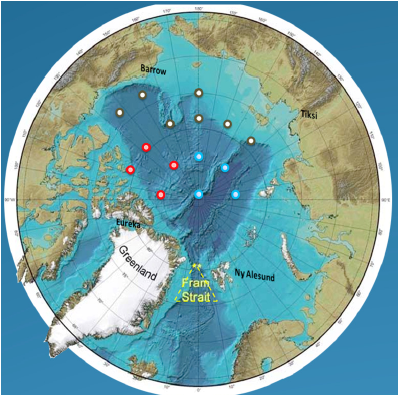
IAOOS buoy network
in an annual cycle. We will achieve this through comprehensive set of simultaneous observations of the annual cycle of simultaneous atmosphere, sea ice, and oceanic observations.
These focused observations will be performed by a range of cutting-edge, autonomous polar platforms that will be deployed at different locations and on different sea ice types. Observational measurements will be linked to a coordinated effort with extensive satellite, airborne, and cruise data of ocean, sea ice, and coastal zones. Observational results will provide data that will be used to verify key physical and bio-geochemical processes represented in models (WP2). cycle of simultaneous atmosphere, sea ice, and oceanic observations. Some of these will be through adding instruments to the IAOOS buoy network, as below, and additional buoys will be deployed over the next three years.
Data sets, including maps, camera images, and raw data are available through the ICE-ARC data portal.
More images will be added as field work continues.
Want progress updates – read the news stories here.
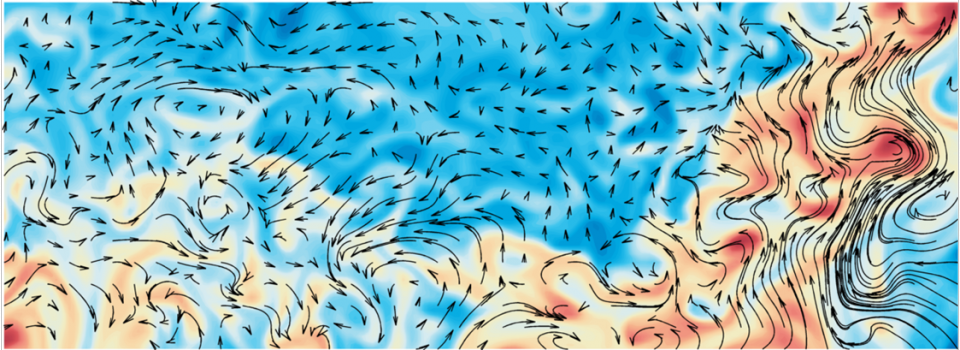
The main objective of this work package is to quantify and reduce uncertainties in climate model projections and to deliver a superior climate model dataset on Arctic marine change (ice cover, air and sea temperature, biological productivity, etc.). The data will be used in socio economic models in the project for selected climate simulations (present to 2100).
Uncertainties in current climate models can only be reduced by increasing our understanding of coupled atmospheric, cryospheric and oceanic processes. The observational benchmark datasets from the Observations work package will be used to particularly evaluate model parameterisations of sea ice. Research will focus on understanding the underlying reasons for discrepancies between models and observations. Analysis of remote sensing based data sets will provide additional information on sea ice properties. Data will also be available from a high resolution, eddy-resolving model with assimilated sea ice.
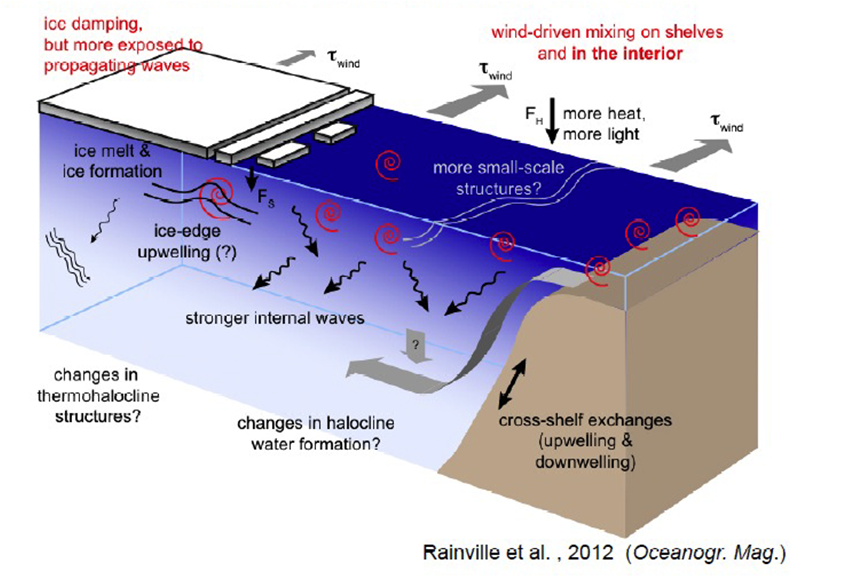
Components that effect the break-up of sea ice: these processes and their interactions need to be better understood, and modelled.
Freshwater pathways in the Arctic will be assessed from observations and model results. The freshwater distribution is a key player in the coupled ocean-cryosphere-atmosphere processes. This also determines the nutrient and light conditions for biological production.
Uncertainties in model treatments of atmospheric processes, in particular those related to representation of clouds and aerosols will be addressed using an Arctic regional model and used to evaluate the climate model. Another focus will be on impacts of mid-latitude pollution and increasing local emissions on aerosols, climate and pollutant deposition to oceans will be assessed.
The improved Earth System Model MPI-ESMwill make projections of the rate and nature of future changes in the ice cover, ocean structure and atmospheric temperature and circulation. Forcing fields from this run will be used in a regional coupled biophysical model system (SINMOD) to provide projections of future marine productivity in the Arctic. 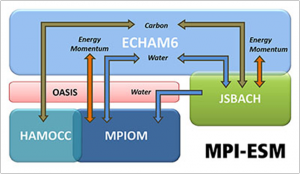
Want progress updates – read the news stories here.
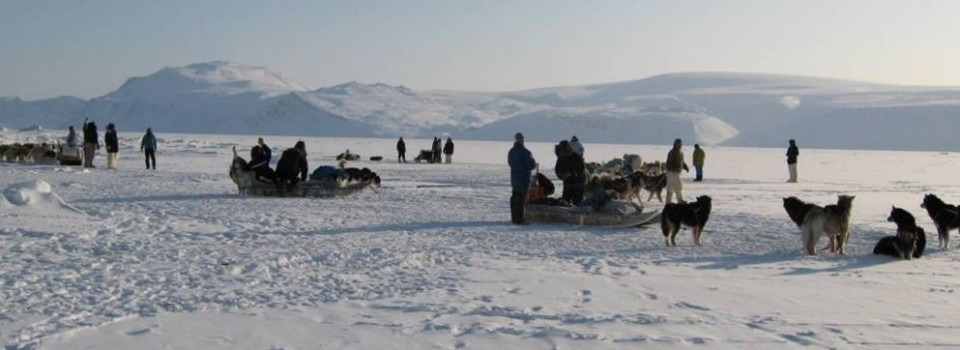
Throughout Greenland, many people in small, often remote coastal communities, as well as those living in larger towns, maintain a strong connection to the Arctic environment through customary activities of hunting and fishing. These activities provide the basis for identities, livelihoods and food security.
This Work Package aims to understand the consequences of current and projected changes in sea ice, environment and socio-economic conditions on people’s livelihoods in communities in the Uummannaq, Upernavik and Qaanaaq areas of northwest Greenland. At the same time, we are concerned with understanding how changes in the past affected those communities and their adaptive capacities and survival strategies.
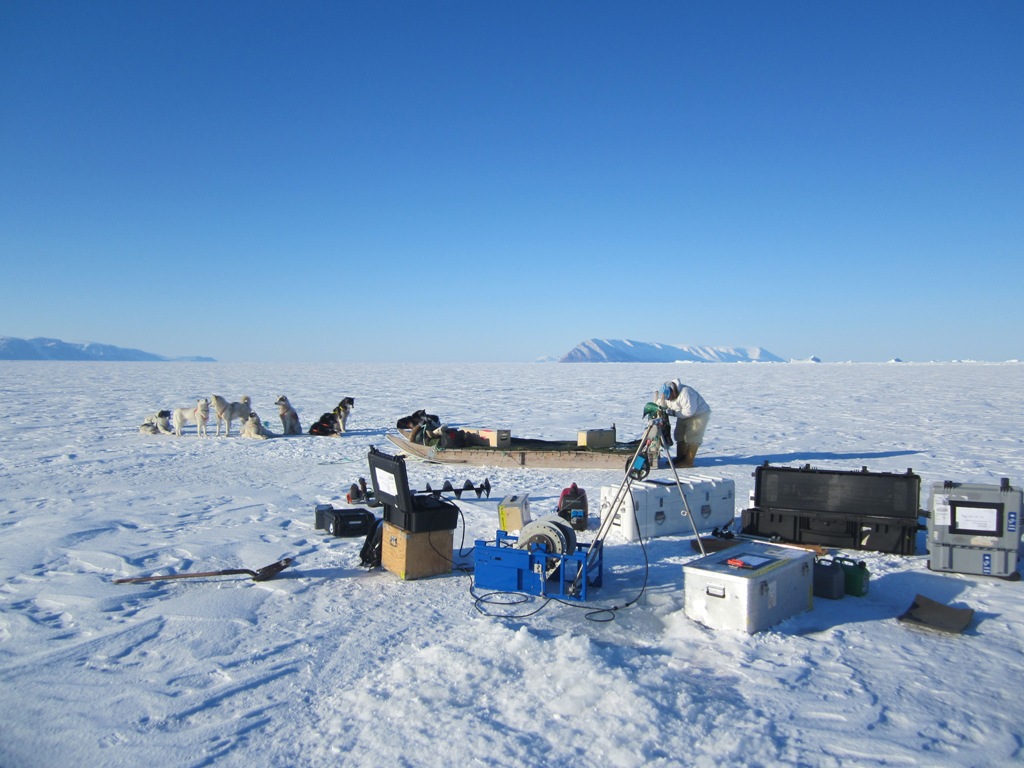
DMI researcher Steffan Olsen working on ice with Inuit hunters for observing the ocean and sea-ice in the Arctic – from the first ICE-ARC field campaign.
While contributing to our understanding of human-environment relations in the Arctic, our research has a careful eye to policy relevance and we are concerned with working with communities to develop local approaches for ensuring sustainable livelihoods.
An important aspect of our work is understanding climate change within the context of other changes and societal and economic transformations in Greenland, including resource development and extractive industries. Rapid social, economic and demographic change, wildlife management and resource development, trade barriers, and conservation policies all have significant implications for human security and sustainable livelihoods in the Arctic. In many cases, climate change magnifies existing societal, political, economic, legal, institutional and environmental challenges that people experience and negotiate in their everyday lives.
Our research is based on collaborative, in-depth work with communities, institutions and organizations. We focus on the inter-linkages between present changes in environmental and socio-economic conditions within communities in northwest Greenland. We seek to understand climate change impacts within the context of other changes and institutional and legal barriers to adaptation.
Working through Greenlandic (kalaallisut), we aim to understand local and regional impacts and experiences of climate change, the dynamics, socio-economics and political ecology of resource use, non-renewable resource development and the adaptive capacities of local communities. For example:
Our initial work focuses on marine living resources and their use in the community hunting areas, and we are conducting field studies to understand changing environmental and sea ice conditions.
A further aspect of this work package is to place recent changes in archaeological and historical context by unravelling the impact of changes on cultures over the last 4500 years, a period during which Greenland experienced several episodes of human migration and cultural transition.
Observations of how past changes affected previous indigenous cultures, and how people responded, will contribute to understanding how indigenous communities are facing changing environments today.
Our Greenlandic research will have broader relevance for the Arctic region in change, in terms of understanding local adaptive capacity, resilience and vulnerability. Integrating our work with other aspects of ICE-ARC, we will contribute to the development of effective policy and management options for societal responses to change.
Specifically, we will provide scientific and policy-focused knowledge that will be used by the economics team for understanding and responding to climate change challenges in order to safeguard Arctic marine living resources for human communities.
Want progress updates? – read the news stories below:
[catlist name=”WP3″]
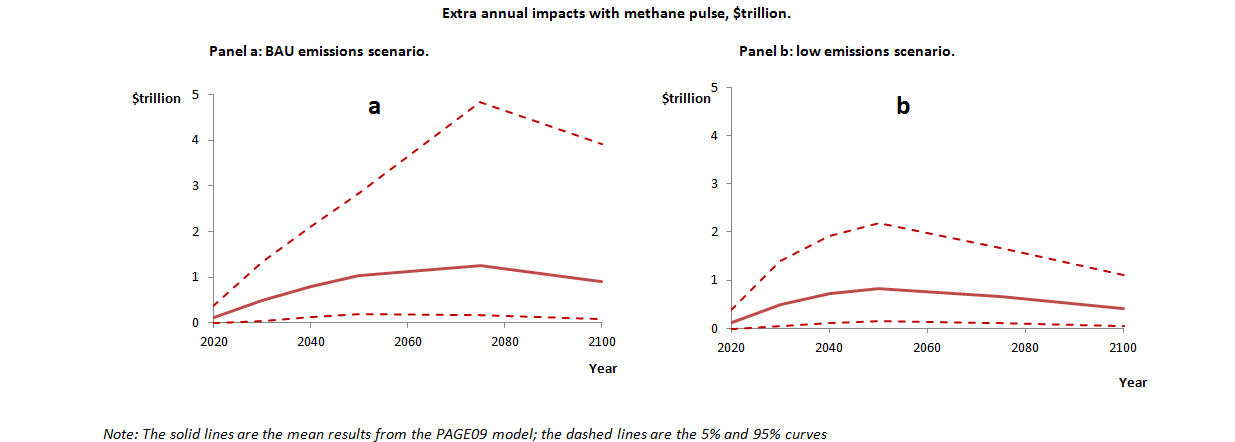
The main objectives of this work package are:
Our approach is to utilize and adapt the PAGE integrated assessment model to the ICE-ARC project. An earlier version of the model, PAGE2002, was used in the Stern Review 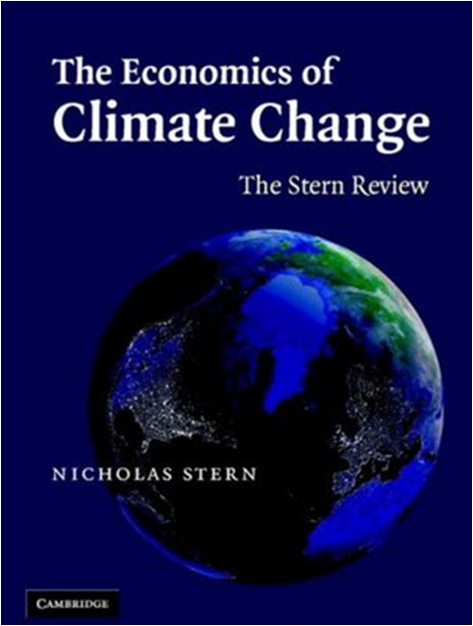 of the Economics of Climate Change to value the impacts from climate change, and is one of the leading integrated assessment models worldwide. PAGE can calculate the amount by which the Net Present Value (NPV) of impacts, aggregated over the whole time period to 2200, increases if one more tonne of CO2 is emitted, or decreases if one less tonne is emitted – the social cost of carbon (SCC).
of the Economics of Climate Change to value the impacts from climate change, and is one of the leading integrated assessment models worldwide. PAGE can calculate the amount by which the Net Present Value (NPV) of impacts, aggregated over the whole time period to 2200, increases if one more tonne of CO2 is emitted, or decreases if one less tonne is emitted – the social cost of carbon (SCC).
The most recent version of the model, PAGE09, uses simple equations to simulate the results from more complex specialised scientific and economic models. It does this while accounting for the profound uncertainty that exists around climate change (in terms of drivers as well as its effects).
Calculations are made for eight world regions including the EU, ten time periods to the year 2200, and four impact sectors (sea level, economic, non-economic, and discontinuities). All calculations are performed probabilistically, using Latin Hypercube Sampling to build up probability distributions of the results. The results for two policies and the difference between them are calculated in a single run of the model, so that the incremental costs and benefits of different mitigation (abatement) and adaptation policies can be found.
ICE-ARC affiliate Chris Hope has a blog “Keeping an Eye on Climate Policy”
Want progress updates? – read the news stories below:
[catlist name=”WP4″]